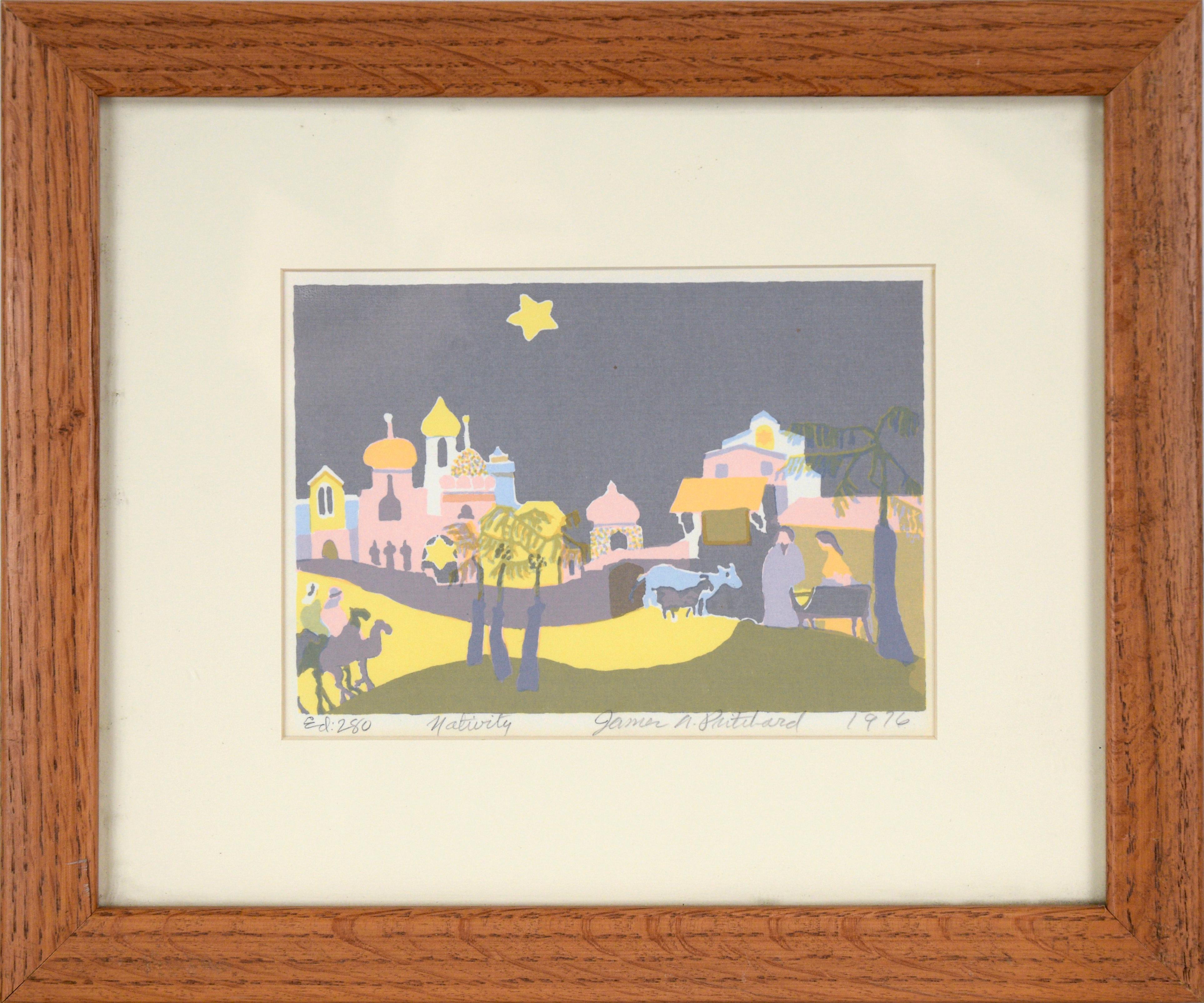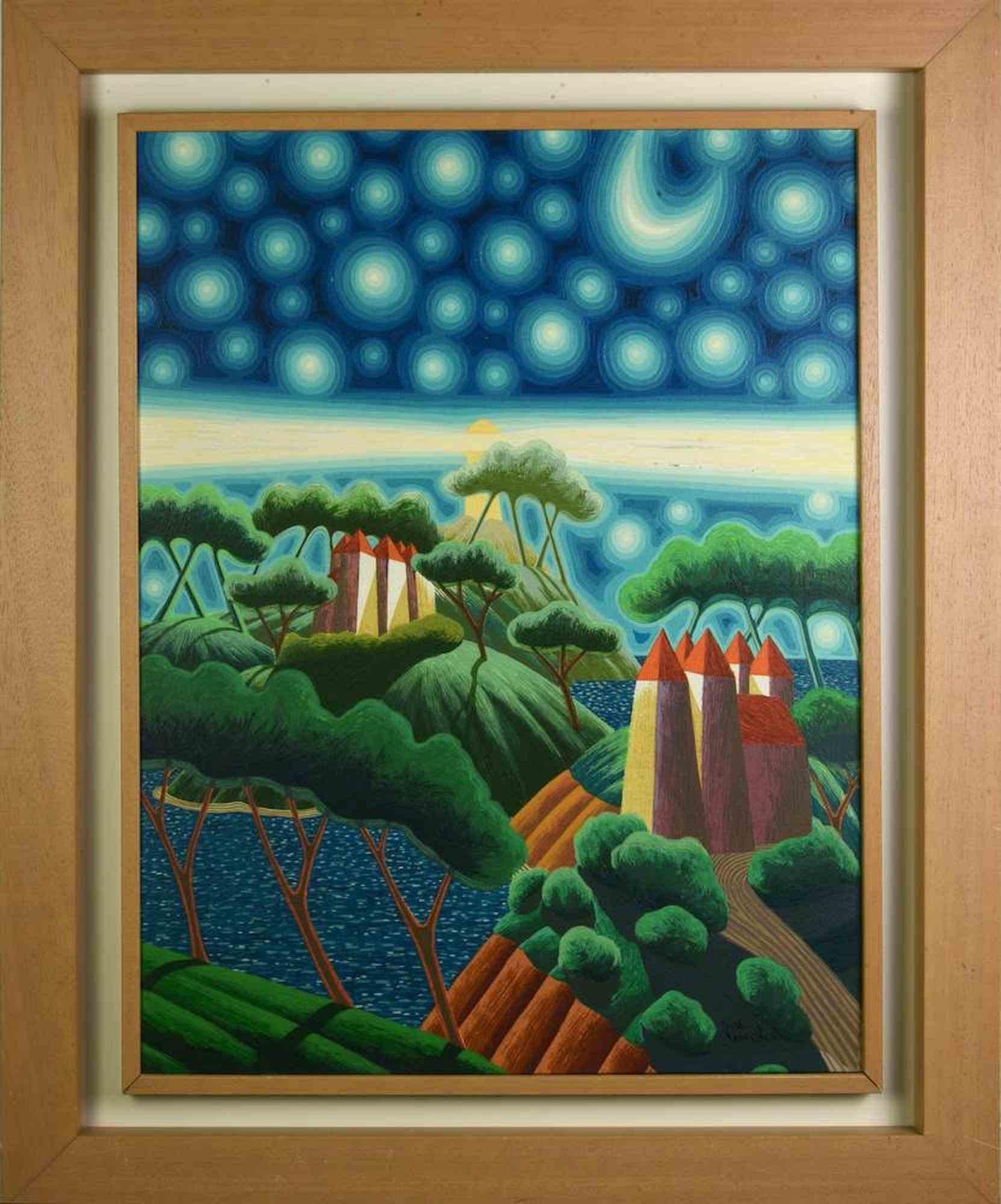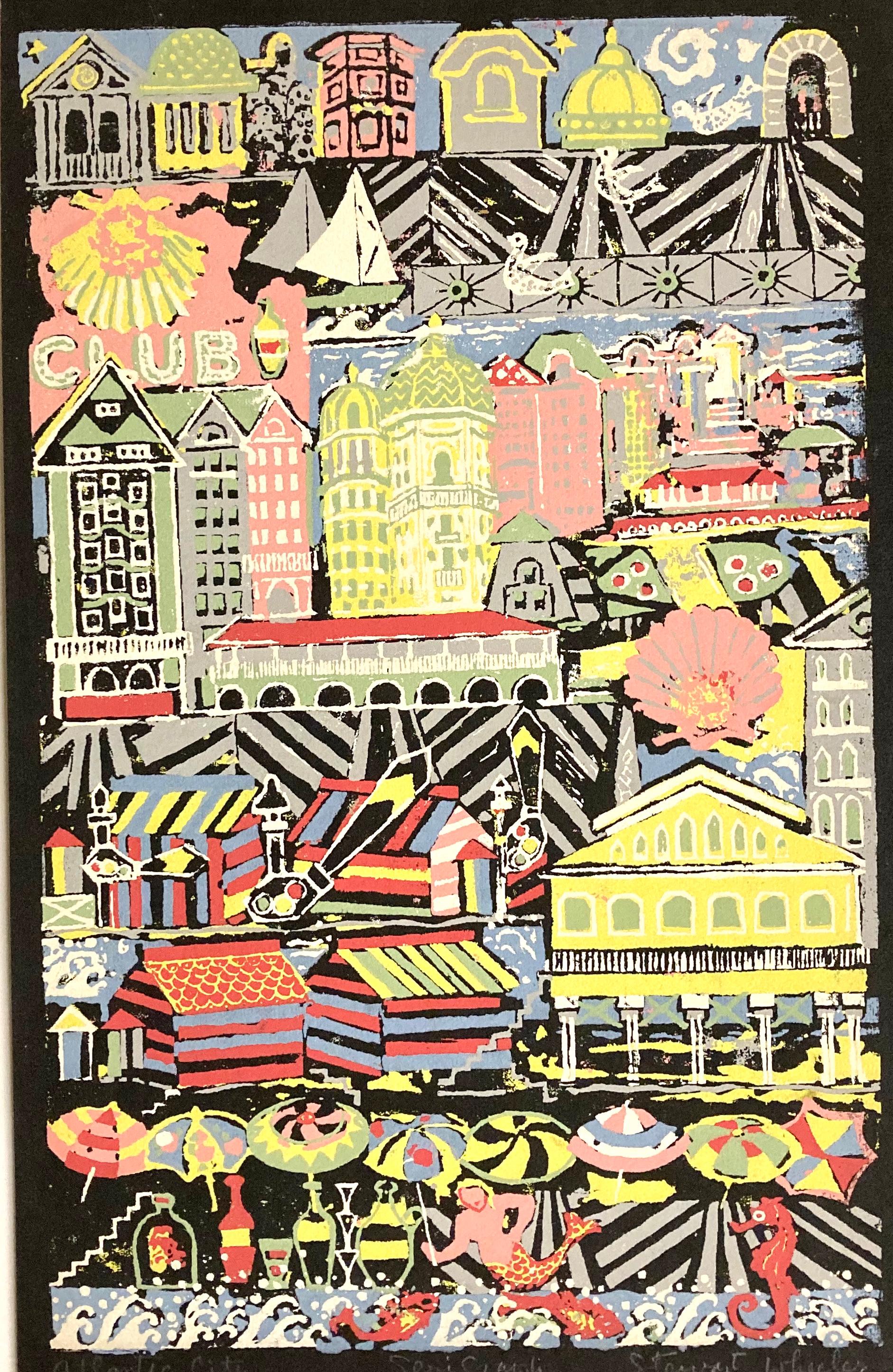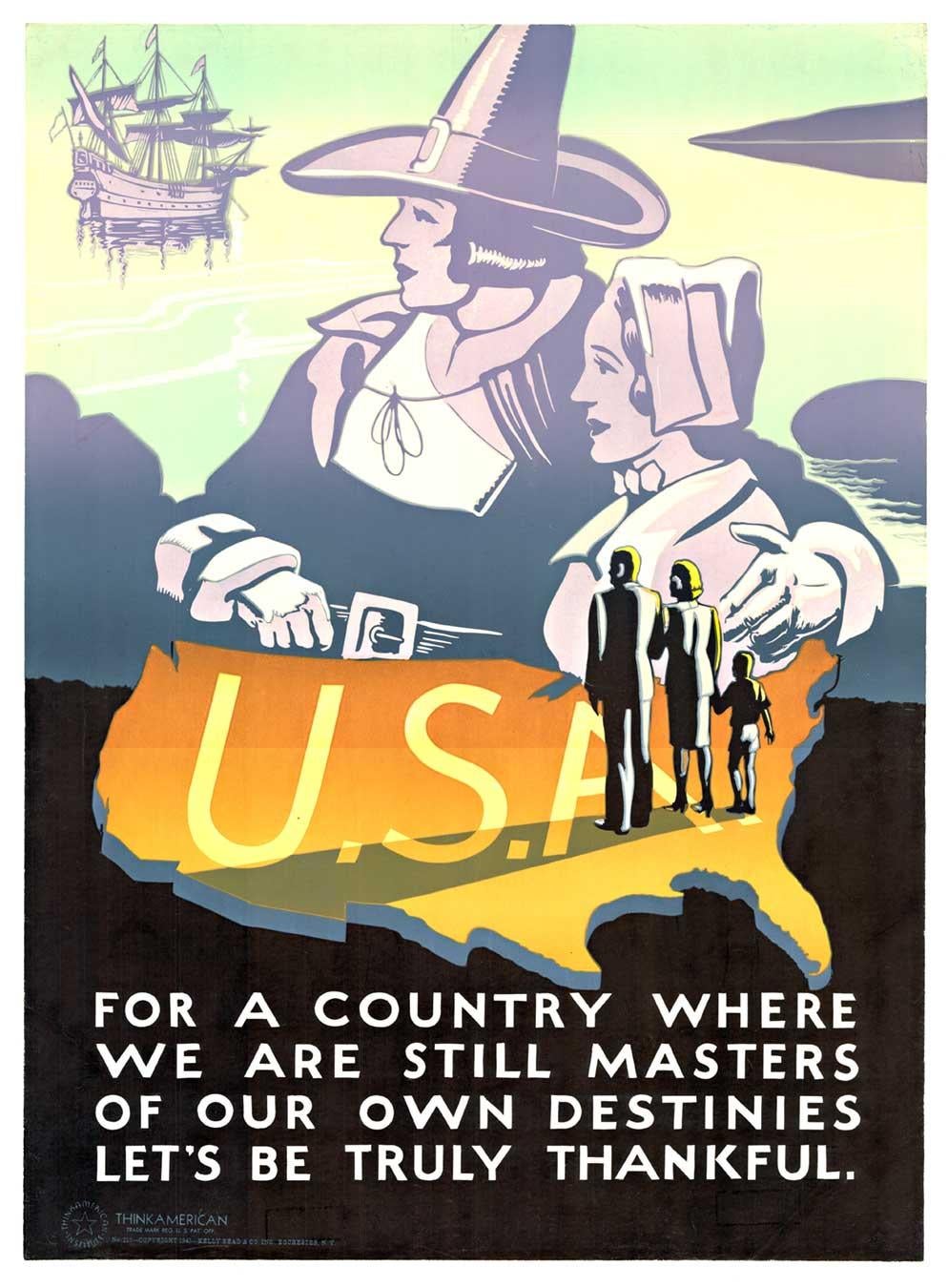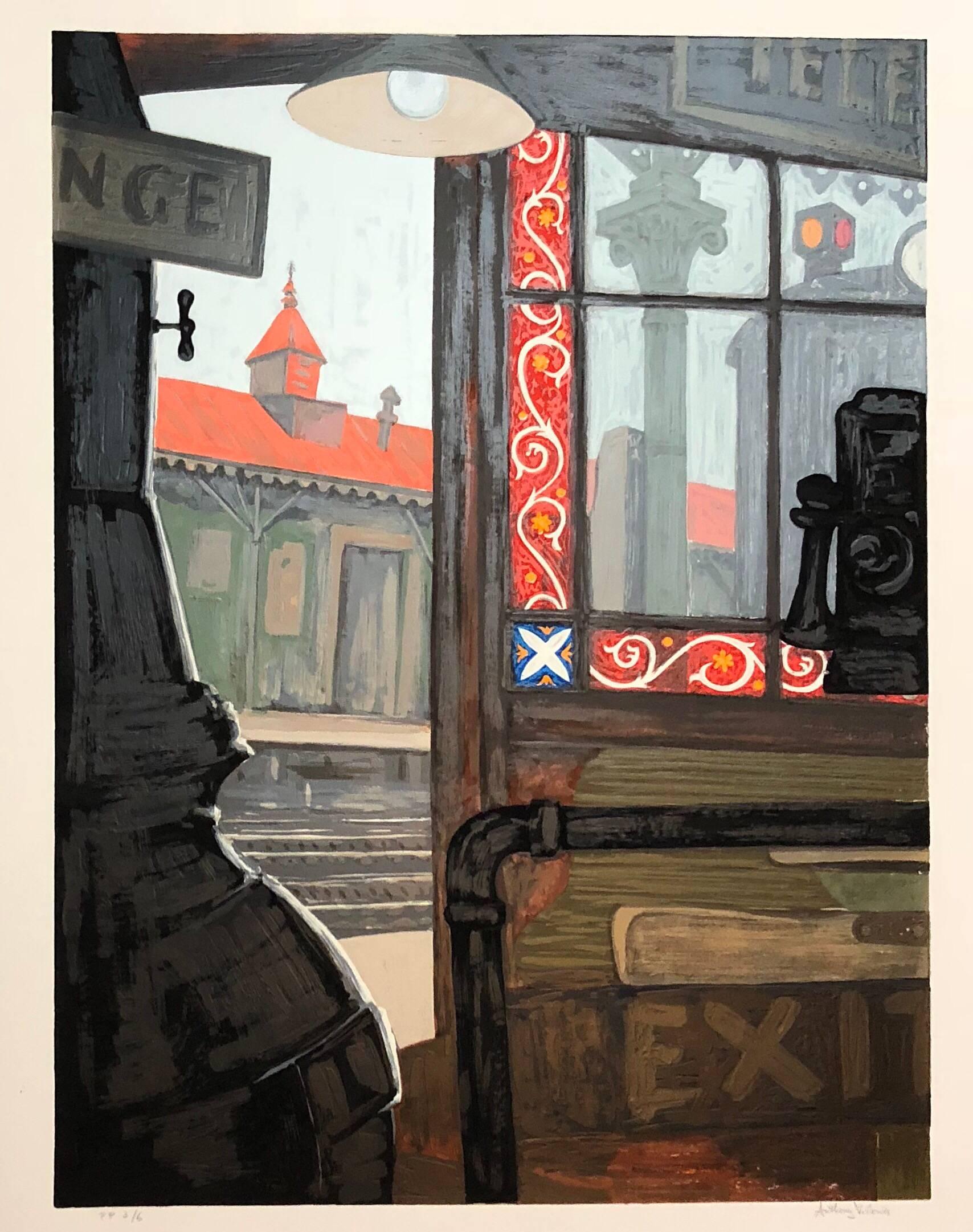Items Similar to 'Serving Poi', Hawaii, NYMoMA, Metropolitan Museum, National Gallery, SFAA, GGIE
Want more images or videos?
Request additional images or videos from the seller
1 of 16
Marion Osborn Cunningham'Serving Poi', Hawaii, NYMoMA, Metropolitan Museum, National Gallery, SFAA, GGIE1948
1948
About the Item
Stamped, verso, with certification of authenticity for 'Marion Cunningham' (American, 1908-1948) and created in 1948.
Paper dimensions: 17.75 x 16 inches
A substantial and rare, mid-century silkscreen showing a Hawaiian family seated beneath a traditional tent of tapa cloth and being served poi by a young woman. To realize this complex work, Cunningham used as many as one dozen hand-drawn screens, each of which varied in pigment, hue and opacity. Created during the extraordinary creative ferment that characterized the last year of the artist's life, this work represents a remarkable achievement for both artist and medium.
Born in Indiana, Marion Osborn Cunningham moved to California in 1911. She first studied art with the American Impressionist, Ruth Heil Emerson, before continuing her education at Santa Barbara City College and receiving her Bachelor of Arts from Stanford University. She subsequently furthered her studies at the California School of the Fine Arts and at the Art Students League in New York City, where she met and married the American abstract artist Ben Cunningham. Returning to San Francisco, she opened a studio on Montgomery Street, the center of San Francisco’s art colony, where she continued to paint and create graphic works for the remainder of her life.
Over the course of a distinguished career, Marion Cunningham exhibited widely and with success, including at the National Serigraph Society; the Association of San Francisco Women Artists; the San Francisco Art Association; the San Francisco Museum of Art Inaugural (1935); the Golden Gate International Exposition (1939); the San Francisco Watercolor Show (1939) and at her memorial retrospective at the Bakersfield Art Association (1957). She was a member of numerous professional associations including the National Serigraph Society, the Association of San Francisco Women Artists and the San Francisco Art Association. Marion Osborn Cunningham's works are held in the permanent public collections of museums nationwide including the National Gallery in Washington, DC; New York's Metropolitan Museum of Art and Museum of Modern Art; the Pennsylvania Academy of Fine Arts; the San Francisco Museum of Art; the St. Louis Museum of Art; the Cleveland Museum and the De Young Museum, among others.
Exhibitions:
1935 / San Francisco Museum of Art
November 1936 / San Francisco Art Association / 2nd Annual Exhibition of Water Colors and Gouaches
October 1937 / Art Center / “Pastels by Marion Cunningham”
1939 / GGE
1939 / Bolton & Van Horn Gallery, pastels
1939-1943 / San Francisco Society of Women Artists (Now San Francisco Women Artists)
1939 / San Francisco WC Ann
1939-1944 / San Francisco A.A
October 1940 / San Francisco Museum in the Veterans’ building / One Man Show
1940-1942 / Oakland Art Gallery
1943 / Ney Museum, Dallas
1943-1946 / National Serigraph Society
1944 / MoMA
1944 / NAD
1944 / LOC
1944 / San Diego FA Soc.
1945 / Audubon Artists
1945 / San Francisco Society of Women Artists
1945-1946 / Northwest Printmakers
1945 / CPLH
1946 / Stanford University
July 1948 / San Francisco Museum of Art / Marion Cunningham Memorial Exhibition
May 1950 / Prints Room of the State Library / Memorial Exhibition assembled by her parents
1957 / Bakersfield Art Association
Permanent Collections:
Fine Arts Museums of San Francisco[2]
San Francisco Museum of Modern Art[2]
Bakersfield Museum of Art[2]
Metropolitan Museum of Art (MMA)[2]
St. Louis Art Museum[2]
Cleveland Museum of Art[2]
de Young Museum
State Department Washington, DC
California Palace of the Legion of Honor (CPLH)
Moscow Museum
Oakland Museum of California (compliments of San Francisco Housing Authority)
References:
Artists in California 1786-1940, Third Edition, Edan Milton Hughes: Crocker Art Museum, Sheridan Books 2002, Vol. 1, p. 266; Who Was Who in American Art 1564-1975: 400 Years of Artists in America, Peter Hastings Falk, Sound View Press 1999, Vol. 1, p. 796; Vollmer Allgemeines Lexikon der Bildenden Künstler des 20. Jarhhunderts, Hans Vollmer, Deutscher Taschenbuch Verlag 1992, Vol. 1, p. 502; Davenport’s Art Reference Guide, 2009/10 Edition, p. 669; Mallett’s Index of Artists, Supplement, Daniel Trowbridge Mallett, New York, 1948, p. 62; Emerging from the Shadows: A Survey of Women Artists Working in California, 1860-1960, Maurine St. Gaudens, Schiffer Publishing Ltd 2015, Vol. 1, p. 240-243; et al.
- Creator:Marion Osborn Cunningham (1908 - 1948, American)
- Creation Year:1948
- Dimensions:Height: 16.5 in (41.91 cm)Width: 14.25 in (36.2 cm)
- Medium:
- Movement & Style:
- Period:
- Condition:minor age-toning, old tape verso; unframed; shows well.
- Gallery Location:Santa Cruz, CA
- Reference Number:1stDibs: LU34410576702
About the Seller
5.0
Platinum Seller
These expertly vetted sellers are 1stDibs' most experienced sellers and are rated highest by our customers.
Established in 1982
1stDibs seller since 2013
626 sales on 1stDibs
Typical response time: <1 hour
- ShippingRetrieving quote...Ships From: Santa Cruz, CA
- Return PolicyA return for this item may be initiated within 3 days of delivery.
More From This SellerView All
- 'Mimosa Tree Restaurant', Aegean, Cyclades, Japanese Artist in Greece, Feral CatLocated in Santa Cruz, CASigned lower right, 'Hirano' for Yoshito Hirano (Japanese, born 1938) and created circa 1970; titled, verso, 'Mimosa Tree Restaurant'. Paper dimensions: 28...Category
1970s Modern Landscape Prints
MaterialsPaper, Lithograph
- 'A College Trick', English Satirist, London's Royal Academy, Comedic, BenezitBy Thomas RowlandsonLocated in Santa Cruz, CAAn amusing view of an academic wagging his finger in disapproval as a young lady in a rope seat is pulled up to a college dorm window by a group of revelling students. Thomas R...Category
18th Century Figurative Prints
MaterialsPaper, Engraving, Lithograph
- 'Musicians Viewing the Full Moon', Large Japanese Color Woodblock Print, BiwaBy Ogyu TensenLocated in Santa Cruz, CASigned, lower right, with artist's chop mark in Hiragana, 'Tensen-e' 天泉絵, for Ogyū Tensen 荻生天泉 (Japanese, 1882-1947) A large, early-20th-century, hand-colored Japanese woodblock showing elegantly-robed figures seated beside musical instruments in a panoramic landscape and viewing the full moon through golden clouds. An elegant example composed with clear artistic vision and printed with a consummate mastery of a challenging medium. Nihonga style painter Ogyu Tensen was born in present-day Nihonmatsu City, Fukushima Prefecture. He studied at the Tokyo Fine Arts School, where he was taught by the well-known Kanō school painter Gahō Hashimoto (1835-1908), who was instrumental in the development of nihonga painting. Tensen was selected to participate in the first Bunten exhibition (Ministry of Education Fine Arts Exhibition) in 1907, in which he won an award. He went on to win many other awards at the Bunten exhibitions and the exhibitions of its successor organizations, the Teiten (Imperial Academy of Fine Arts) and Shin Bunten along with exhibitions of the Japan Arts Institute (Nihon Bijutsuin) and the post-war 1946 Nitten (Japan Fine Arts Exhibition). Along with his work in printmaking, the Imperial Court commissioned paintings by him. Tensen was a member of the Futaba kai artist...Category
1920s Figurative Prints
MaterialsFiberboard, Woodcut, Paper
- 'Summer', New York ASL, Art Students League, PAFA, Salon d'Automne, ParisBy Nura UlreichLocated in Santa Cruz, CASigned lower right 'Nura' for Nura Woodson Ulreich (American, 1899–1950) above copyright information 'Nura W. Ulreich' and dated 1938. The poem below the figure of Summer reads: "Shimmer of heat from the hot dust road. Cold is the mud where the fern grows deep. Flower-scented atmosphere- peaceful sleep. Humming Bird daintily poised on its way. Velvet the night- iridescent the day. Showers and thunder, soft rainbows. Beauty incarnate in delicate clothes. This is the saga of Summer. " This painter, illustrator, muralist, lithographer, author and poet first studied at the Kansas City Art Institute before attending the Chicago Academy of Fine Arts and the Art Students League in New York. Nura Woodson then studied under John French Sloan and, later, with Frederic Gruger. She subsequently moved to Paris where she lived and painted for several years and where she met and married her husband, the Hungarian-American artist Buk Ulreich. While in France, she exhibited with success, including at the Salon d'Automne, and began to paint under the brush name, 'Nura'. After returning to the United States, Ulreich continued to exhibit widely, including at the Art Institute of Chicago, the Corcoran Galleries Biennials (1928-39), the Salons of America, the Society of Independent Artists (1928, 1941) and the Pennsylvania Academy of Fine Arts (1929-1931). Nura Ulreich...Category
1930s Art Deco Figurative Prints
MaterialsPaper, Lithograph
- 'Deckchairs on the Beach', Hand-Colored ScreenprintBy Margie DicksonLocated in Santa Cruz, CASigned lower right, 'Margie Dickson' (American, 20th century) and dated 1990; additionally inscribed lower center 'hand colored screen print' with number and limitation, '5/20' and titled lower left...Category
1990s Modern Landscape Prints
MaterialsScreen, Paper
- 'San Francisco Harbor', SFAA, MoMA, de Young Museum, San Francisco Woman ArtistBy Marion Osborn CunninghamLocated in Santa Cruz, CAA panoramic view of the San Francisco docks showing a large destroyer berthed at right, with a view beyond towards Treasure Island and a luminous harvest moon hanging above the hills. Signed, in screen, lower right 'Marion Cunningham' (American, 1908-1948) and dated 1944. Paper dimensions: 10.25 x 14.5 inches Born in Indiana, Marion Osborn Cunningham moved to California in 1911. She first studied art with the American Impressionist, Ruth Heil Emerson, before continuing her education at Santa Barbara City College and receiving her Bachelor of Arts from Stanford University. She subsequently furthered her studies at the California School of the Fine Arts and at the Art Students League in New York City, where she met and married the American abstract artist Ben Cunningham. Returning to San Francisco, she opened a studio on Montgomery Street, the center of San Francisco’s art colony, where she continued to paint and create graphic works for the remainder of her life. Over the course of a distinguished career, Marion Cunningham exhibited widely and with success, including at the National Serigraph Society, the Association of San Francisco Women Artists, the San Francisco Art Association, the San Francisco Museum of Art Inaugural (1935); the Golden Gate International Exposition (1939); San Francisco Watercolor Show (1939); and her memorial retrospective at the Bakersfield Art Association (1957). She was a member of numerous professional associations including the National Serigraph Society, the Association of San Francisco Women Artists and the San Francisco Art Association. Marion Osborn Cunningham's works may be found in the permanent public collections of museums nationwide including the National Gallery in Washington, DC; New York's Metropolitan Museum of Art and Museum of Modern Art; the Pennsylvania Academy of Fine Arts; the San Francisco Museum of Art; the St. Louis Museum of Art; the Cleveland Museum and the De Young Museum...Category
1940s Modern Landscape Prints
MaterialsScreen, Paper
You May Also Like
- "Nativity" Modernist Landscape Screen Print in Ink on Paper -Located in Soquel, CA"Nativity" Modernist Landscape Screenprint in Ink on Paper Whimsical modern landscape silkscreen print of the nativity scene by San Francisco, C...Category
1970s Modern Figurative Prints
MaterialsPrinter's Ink, Screen, Paper
- Landscape - Screen Print by Luca Dall'Olio - 2000sLocated in Roma, ITLandscape is an artwork realized by Luca Dall'Olio. Materic screen printing on canvas, cm 65x50, ex. IV/XXX. Signature and edition On the back: Stamperia d'Arte Artevalori stamp ...Category
Early 2000s Modern Figurative Prints
MaterialsPaper, Screen
- Stewart Wheeler, Atlantic City (New Jersey)Located in New York, NYThe little that is know about the painter and printmaker Stewart Wheeler indicates that most of his career was spent in Philadelphia, Pennsylvania. And...Category
Mid-20th Century American Modern Landscape Prints
MaterialsScreen
- Original "Wagon Lits" pop art style serigraph travel by train posterBy Valerio AdamiLocated in Spokane, WAOriginal “Wagon Lits” serigraph poster by the artist Valerio Adami. It was printed in France by GrafiCaza (Michel Caza), one of the finest serigraph companies on woven paper—in exce...Category
1990s American Modern Figurative Prints
MaterialsScreen
- Original "Think American" USA World War II vintage posterLocated in Spokane, WAOriginal poster: For a Country Where We Are Still Masters of Our Own Destinies, Let's Be Truly Thankful. Silk-screened patriotism. This is a poster meant to appeal to the American f...Category
1940s American Modern Figurative Prints
MaterialsScreen
- Modernist Silkscreen Screenprint 'El Station, Interior' NYC Subway, WPA ArtistBy Anthony VelonisLocated in Surfside, FLscreenprint printed in color ink on wove paper. New York City subway station interior. Anthony Velonis (1911 – 1997) was an American painter and designer born in New York City who helped introduce the public to silkscreen printing in the early 20th century. While employed under the federal Works Progress Administration, WPA during the Great Depression, Velonis brought the use of silkscreen printing as a fine art form, referred to as the "serigraph," into the mainstream. By his own request, he was not publicly credited for coining the term. He experimented and mastered techniques to print on a wide variety of materials, such as glass, plastics, and metal, thereby expanding the field. In the mid to late 20th century, the silkscreen technique became popular among other artists such as Robert Rauschenberg and Andy Warhol. Velonis was born into a relatively poor background of a Greek immigrant family and grew up in the tenements of New York City. Early on, he took creative inspiration from figures in his life such as his grandfather, an immigrant from the mountains in Greece, who was "an ecclesiastical painter, on Byzantine style." Velonis attended James Monroe High School in The Bronx, where he took on minor artistic roles such as the illustration of his high school yearbook. He eventually received a scholarship to the NYU College of Fine Arts, into which he was both surprised and ecstatic to have been admitted. Around this time he took to painting, watercolor, and sculpture, as well as various other art forms, hoping to find a niche that fit. He attended NYU until 1929, when the Great Depression started in the United States after the stock market crash. Around the year 1932, Velonis became interested in silk screen, together with fellow artist Fritz Brosius, and decided to investigate the practice. Working in his brother's sign shop, Velonis was able to master the silkscreen process. He reminisced in an interview three decades later that doing so was "plenty of fun," and that a lot of technology can be discovered through hard work, more so if it is worked on "little by little." Velonis was hired by Mayor LaGuardia in 1934 to promote the work of New York's city government via posters publicizing city projects. One such project required him to go on a commercial fishing trip to locations including New Bedford and Nantucket for a fortnight, where he primarily took photographs and notes, and made sketches. Afterward, for a period of roughly six months, he was occupied with creating paintings from these records. During this trip, Velonis developed true respect and affinity for the fishermen with whom he traveled, "the relatively uneducated person," in his words. Following this, Velonis began work with the Public Works of Art Project (PWAP), an offshoot of the Civil Works Administration (CWA), where he was assigned to serve the different city departments of New York. After the formation of the federal Works Progress Administration, which hired artists and sponsored projects in the arts, he also worked in theater. Velonis began working for the federal WPA in 1935. He kept this position until 1936 or 1938, at which point he began working in the graphic art division of the Federal Art Project, which he ultimately led. Under various elements of the WPA program, many young artists, writers and actors gained employment that helped them survive during the Depression, as well as contributing works that created an artistic legacy for the country. When interviewed in December 1994 by the Library of Congress about his time in the WPA, Velonis reflected that he had greatly enjoyed that period, saying that he liked the "excitement" and "meeting all the other artists with different points of view." He also said in a later interview that "the contact and the dialogue with all those artists and the work that took place was just invaluable." Among the young artists he hired was Edmond Casarella, who later developed an innovative technique using layered cardboard for woodcuts. Velonis introduced silkscreen printing to the Poster Division of the WPA. As he recalled in a 1965 interview: "I suggested that the Poster division would be a lot more productive and useful if they had an auxiliary screen printing project that worked along with them. And apparently this was very favorably received..." As a member of the Federal Art Project, a subdivision of the WPA, Velonis later approached the Public Use of Arts Committee (PUAC) for help in "propagandizing for art in the parks, in the subways, et cetera." Since the Federal Art Project could not be "self-promoting," an outside organization was required to advertise their art more extensively. During his employment with the Federal Art Project, Velonis created nine silkscreen posters for the federal government. Around 1937-1939 Velonis wrote a pamphlet titled "Technical Problems of the Artist: Technique of the Silkscreen Process," which was distributed to art centers run by the WPA around the country. It was considered very influential in encouraging artists to try this relatively inexpensive technique and stimulated printmaking across the country. In 1939, Velonis founded the Creative Printmakers Group, along with three others, including Hyman Warsager. They printed both their own works and those of other artists in their facility. This was considered the most important silkscreen shop of the period. The next year, Velonis founded the National Serigraph Society. It started out with relatively small commercial projects, such as "rather fancy" Christmas cards that were sold to many of the upscale Fifth Avenue shops...Category
1980s American Modern Figurative Prints
MaterialsScreen
Recently Viewed
View AllMore Ways To Browse
Gallery Seat
The Vintage Hawaii
Hawaiian Print
Hawaii Prints
Dessing Screen
Hawaii Art Print
Hawaiian Art And Prints
Midcentury Serigraph
Mid Century Hawaiian
Mid Century Hawaii
Vintage Hawaiian Art Prints
Al Held Prints
Davenport Vintage
Landscape Prints Pastel Colors
May Milton
American Davenport
Emerson Vintage
Ruth Mayer
